John Knox: The Controversial Father of the Church of Scotland
John Knox was a fiery preacher and the catalyst for Scotland's Reformation legacy.
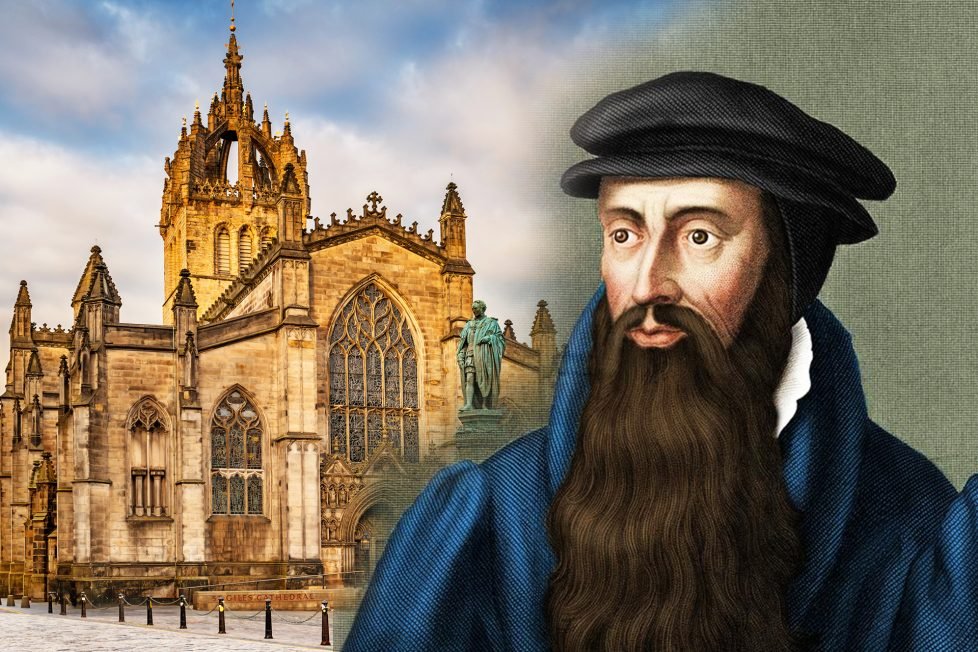
John Knox was a fiery preacher and the catalyst for Scotland's Reformation legacy.

Table of Contents
ToggleIn a 16th Century marked by strong social divides and understandings of rank, it is surprising that John Knox, the son of a farmer from East Lothian in Scotland, would go on to receive a university education and appear in archival records. More surprising still is that this same John Knox would become one of the key figureheads of the Protestant Reformation, and indeed the father of the reformed Church of Scotland, whose impassioned sermons and tracts continue to hold authority and attention to this day.
Even from his earliest years, “The Thundering Scot” John Knox still sparks debate for historians, theologians, biographers, and feminists alike. For some, John Knox was a hero, willing to sacrifice everything from his social standing to his bodily well-being for the cause of defending what he believed was the “one true Church”. For others, Knox was an intolerant, aggressive, misogynistic preacher whose fiery sermons led to unnecessary bloodshed, suffering, and loss of rights for women. The fact that such diverse views can be held regarding the same person betrays the real complexity of Knox’s life, which we will explore in this article by looking at available biographical information. What emerges is a picture of John Knox marked by a struggle to align and balance his religious convictions with the lived realities of 16th century political life, a tension which followed him throughout his life and must be considered to better understand his controversial story.
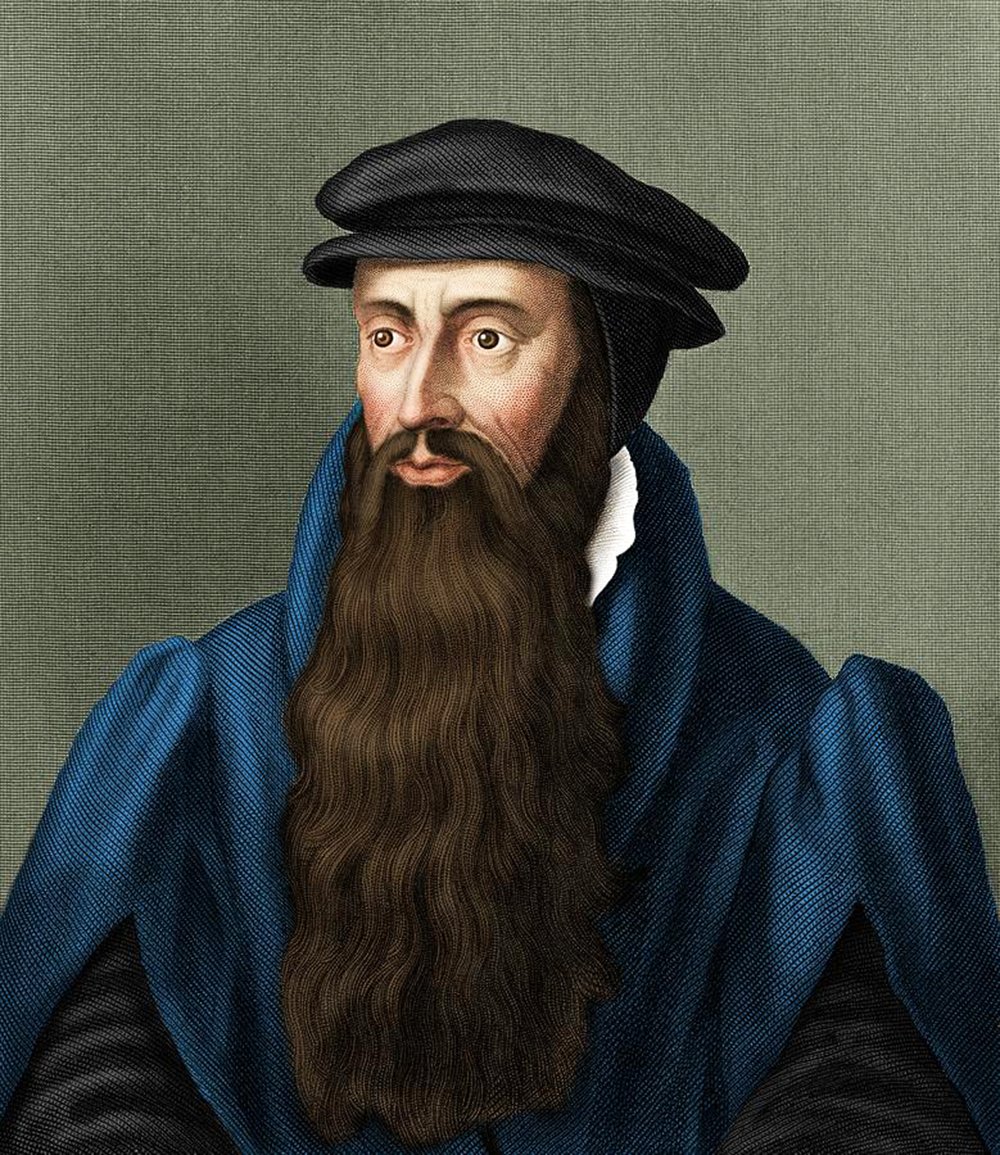
John Knox’s early life continues to be a matter of considerable debate for scholars, as not many details are known for certain. Even Knox’s date of birth is up for discussion, but most estimates place it at 1513. Knox was born near Haddington in East Lothian, and it is widely understood that his father was a farmer. It is worth keeping in mind, however, that John Knox attended university, which lends credence to the idea that his family had enough means to ensure his literacy and encourage his education.
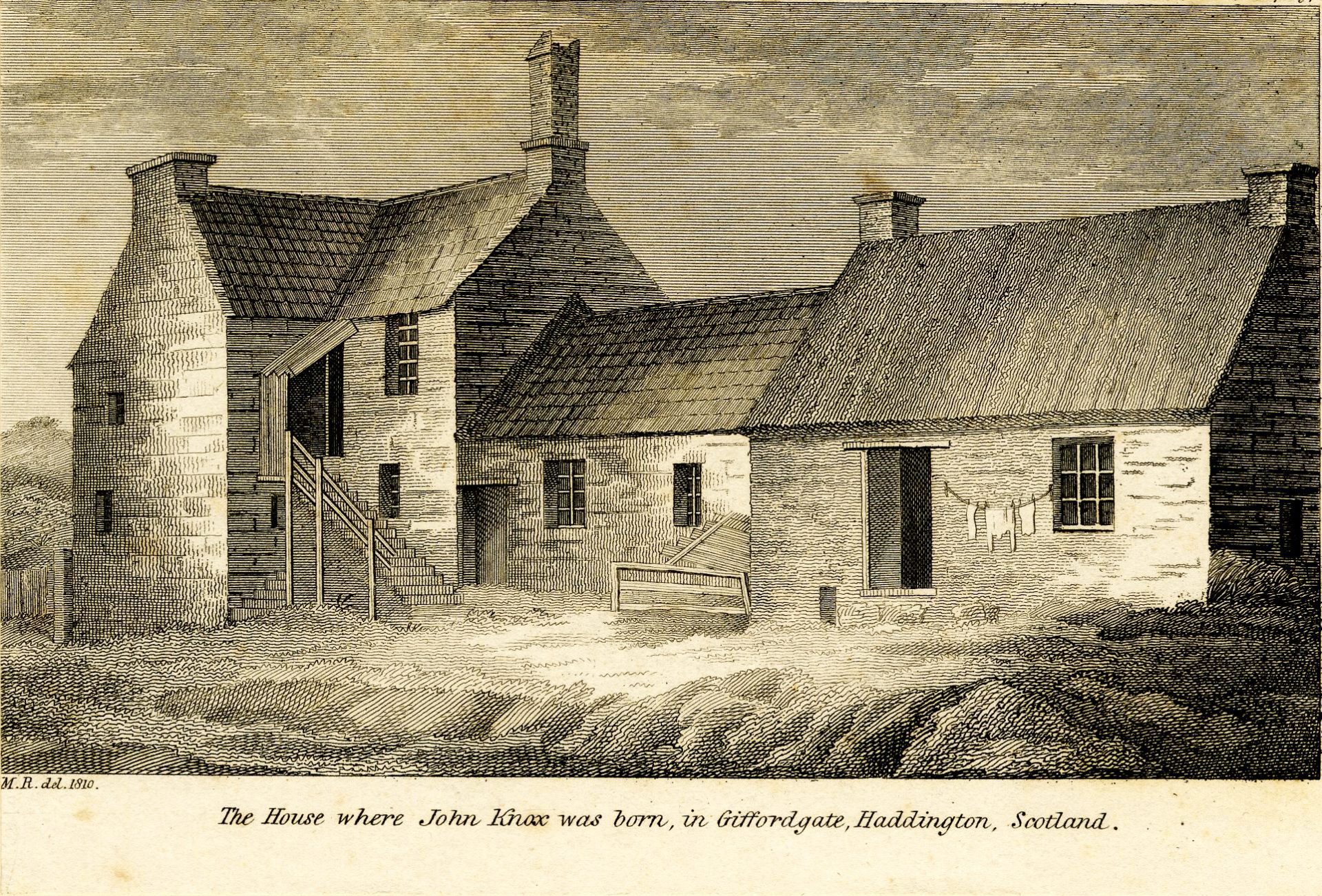
Knox attended the University of St. Andrews, where he studied Theology under leading philosopher and historian John Major. Knox excelled in his studies and was in priest’s orders by age 27. By 1543, Knox was serving as an Apostolic notary, drawing up wills and deeds and verifying documents for the Church. From his choice of university subject to the high degree of religious responsibility he was afforded as a notary, religious life mattered deeply to Knox, and he found a sense of duty in serving Church communities.
The real turning point in Knox’s early life came in 1543, when he was hired as a tutor to the sons of two East Lothian gentlemen, Hugh Douglas of Longniddry and John Cockburn of Ormiston. Both men were well educated and curious about matters related to the Reformation whose message was rapidly spreading across Germany and Switzerland. Cockburn and Douglas hosted itinerant Reformist preacher George Wishart, who had spent time learning from leading Reformers in Germany, giving him several opportunities to preach. John Knox was deeply moved by the sermons Wishart delivered, and fully converted to the Reformed faith by 1545. From this point on, Knox would become an extremely loyal disciple to Wishart, even serving as his bodyguard and famously wielding a double-handed sword to protect Wishart as he delivered his sermons.
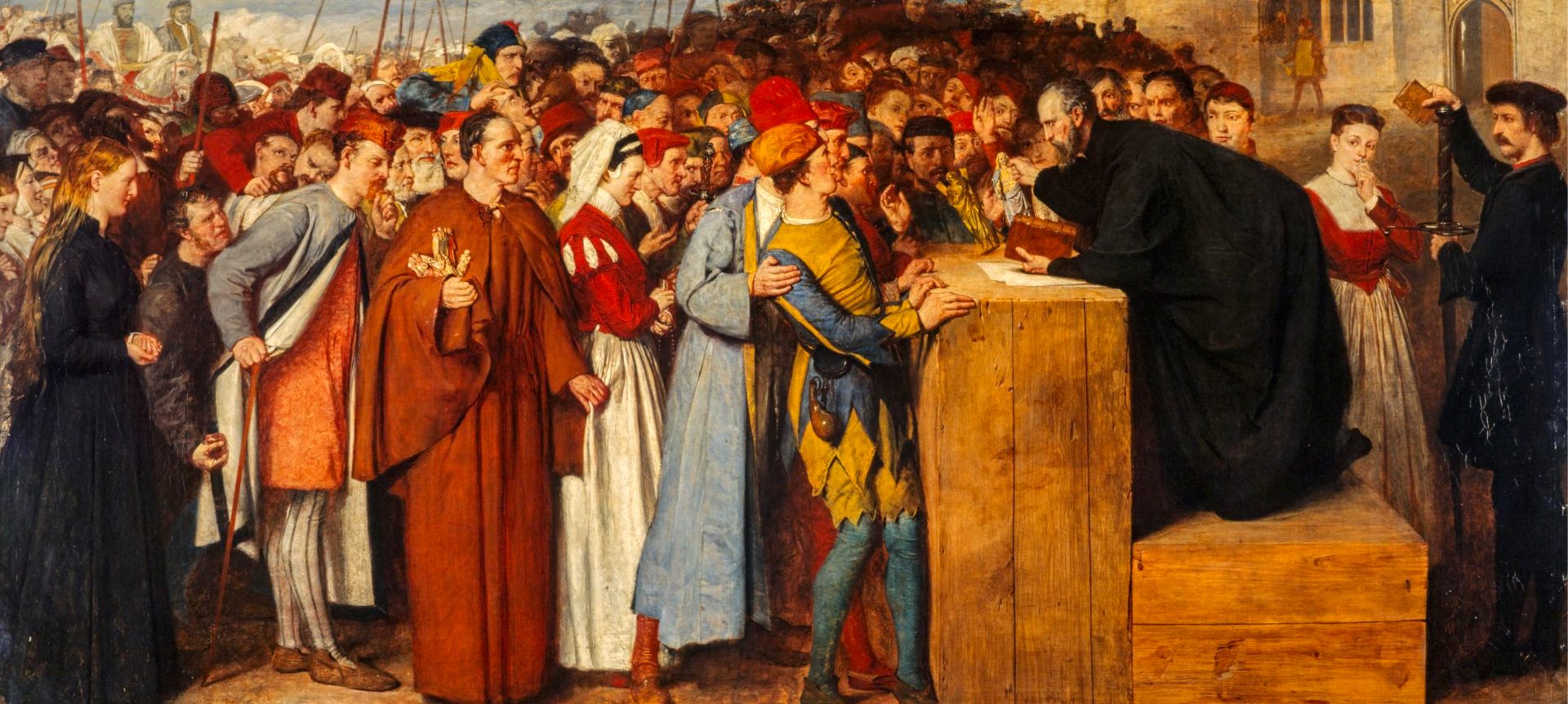
Sadly, in 1546, Wishart was captured on the orders of Cardinal David Beaton, the Catholic Archbishop of St. Andrews. After a mock trial, Wishart was found guilty of heresy and burned at the stake. Wishart’s martyrdom prompted a complex time for John Knox, who avoided persecution by traveling regularly. Knox himself expressed that he wished to travel to Germany to learn from the great figureheads of the Reformation, including John Calvin and Huldrych Zwingli. However, several Scottish lords, angered by Wishart’s death, banded together to lay siege to St. Andrews castle, killing Cardinal Beaton in May 1546. Against his own desire to leave Scotland, Knox joined them at the castle to continue his work as a tutor in relative safety.
John Knox was a shy, soft-spoken man, who much preferred the quiet of a library to the limelight of a Church pulpit. However, during his stay at St. Andrews castle, he was encouraged to preach. After initially resisting, he conceded, delivering his very first sermon in the midst of a besieged castle. The results were staggering. Knox even surprised himself with the force of his words and the inspiration and devotion they prompted in his listeners. From this point on, Knox would be convinced that his sermons came from a divine source, as standing up to give speeches was completely outside his comfort zone. Regardless of their source, Knox’s sermons were an anchor for the community in St. Andrews castle, and Knox became the figurehead of the growing Reformation movement in Scotland.
Even in his early years we can see the beginnings of tensions that would mark John Knox’s life. He was often torn between what he wanted to do, what he was requested to do by authorities and patrons, and what he himself believed a divine source asked of him. What comes through is a picture of a complex negotiation that Knox would have had to perform daily, putting himself and his personal goals in danger in the service of his beliefs and a growing Reformist community.
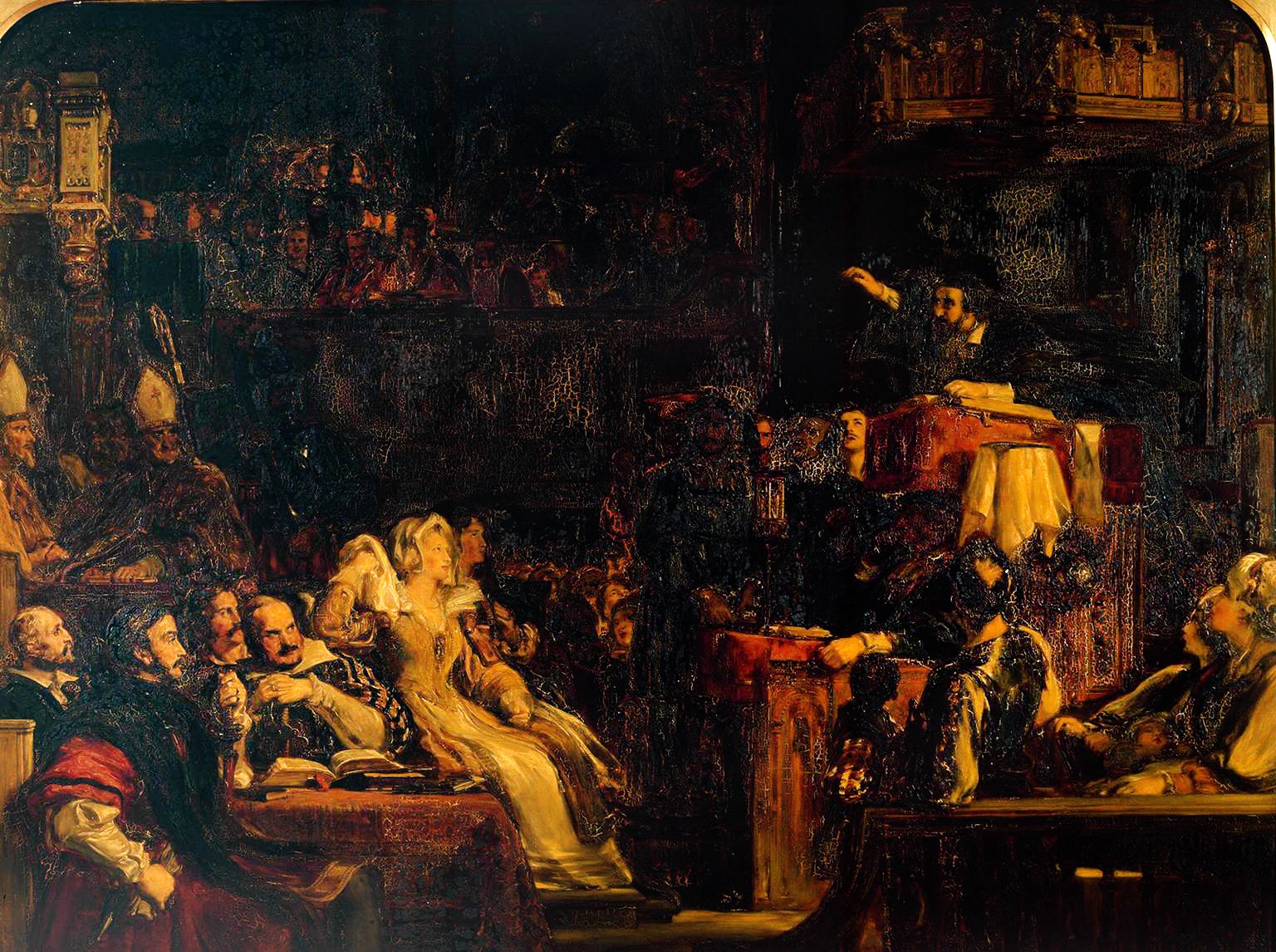
John Knox’s first steps in oratory and preaching were taken during an extremely volatile political situation. Unfortunately for Knox, there would be no calm between storms. In 1547, French military forces reached St. Andrews and assisted in recapturing the castle from Reformist lords. As a result, Knox and several others were shackled and sentenced to work as slaves on French ships.
Knox being pressed into slavery might have been the end of his recorded story had the English government not heard about Knox’s oratory prowess. Within nineteen months of his capture, the government had requested his release and Knox took refuge and worked to spread the message of the Reformation in the northeastern English town of Berwick Upon Tweed.
During his time in Berwick, Knox made his first significant literary contributions to the Canon of the Reformed Church of England. Knox wrote and shaped several of the Church’s articles and laid some of the ideological foundations of what would later become Puritanism.
As we have seen before, Knox’s life was often dramatically affected by ongoing religious and political upheaval in Britain, and his time in Berwick was no different. In 1553, Catholic Mary Tudor ascended the English throne, creating an extremely dangerous environment for Protestant believers. Many Protestants fled the country, and Knox followed suit. In an oblique way, the ascension of Mary Tudor enabled Knox to live out his earlier hope of traveling to Germany. Indeed, on the insistence of John Calvin, Knox moved to Frankfurt to lead a congregation of English Protestant refugees. In these years, we can begin to see a growing ideological radicalism in Knox. In 1554, Knox wrote his Faithful Admonition which criticized the Protestants who had chosen to remain in England and make concessions on their faith, believing that remaining faithful to the full scope of Protestantism was the only correct path.
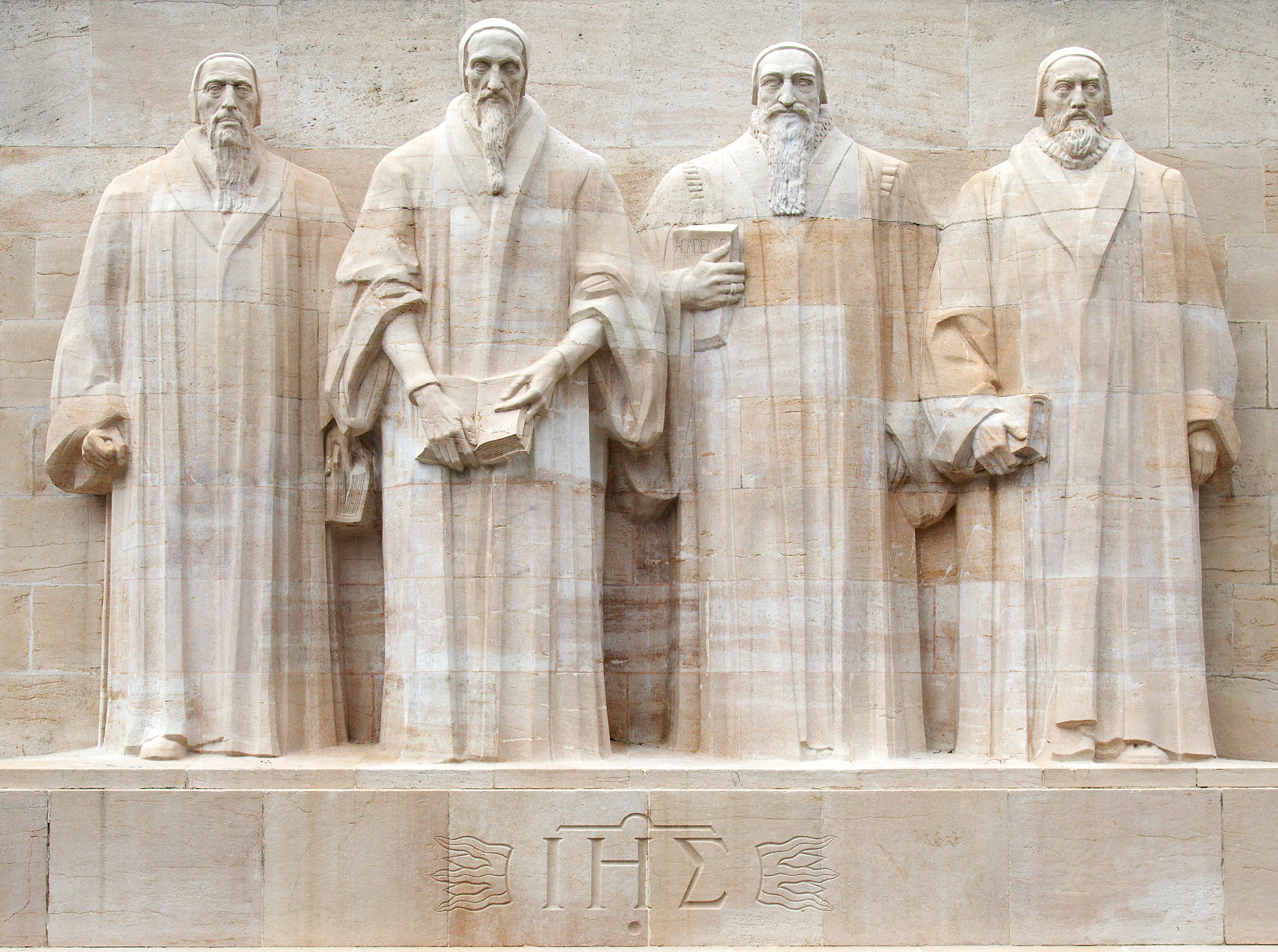
Knox’s puritan teachings only grew upon his move to Geneva, Switzerland, where he remained until 1559. In Geneva, Knox wrote several critical texts supplementing and engaging with Reformist thought, including his Treatise on Predestination. More infamously, however, Knox published his First Blast of the Trumpet against the Monstrous Regiment of Women. In it, Knox expressed that it was morally and spiritually abhorrent for women to hold positions of authority and leadership. Though he no doubt drew on popular 16th century conceptions of gender, Knox himself was well aware that his First Blast was inflammatory, as he initially published it anonymously. In it, he particularly targeted the regency of three women in England, Scotland, and France at the time, calling England’s Queen Mary Tudor a “wicked English Jezebel”. On the surface then, it seems almost impossible to argue that Knox was not a misogynist. However, the tensions between his search for ideological purity and practical, lived realities once again become apparent for Knox. Historians such as Richard G. Kyle and Dale W. Johnson argue that Knox’s personal letters, many of which were to women, betray a surprising tenderness toward them that runs against the grain of his inflammatory First Blast. Moreover, throughout the course of his life, Knox would often come to rely on leading women to protect the moral integrity of burgeoning Protestant communities. As a result, we can argue that though Knox’s stance on women was no doubt problematic, it is likely that the First Blast was borne out of a particular frustration with the fact that none of the queens reigning at the time had wished to convert to the Reformed faith. In practice, Knox’s relationships with women were once again marked by tensions and a give and take of ideological and practical priorities.
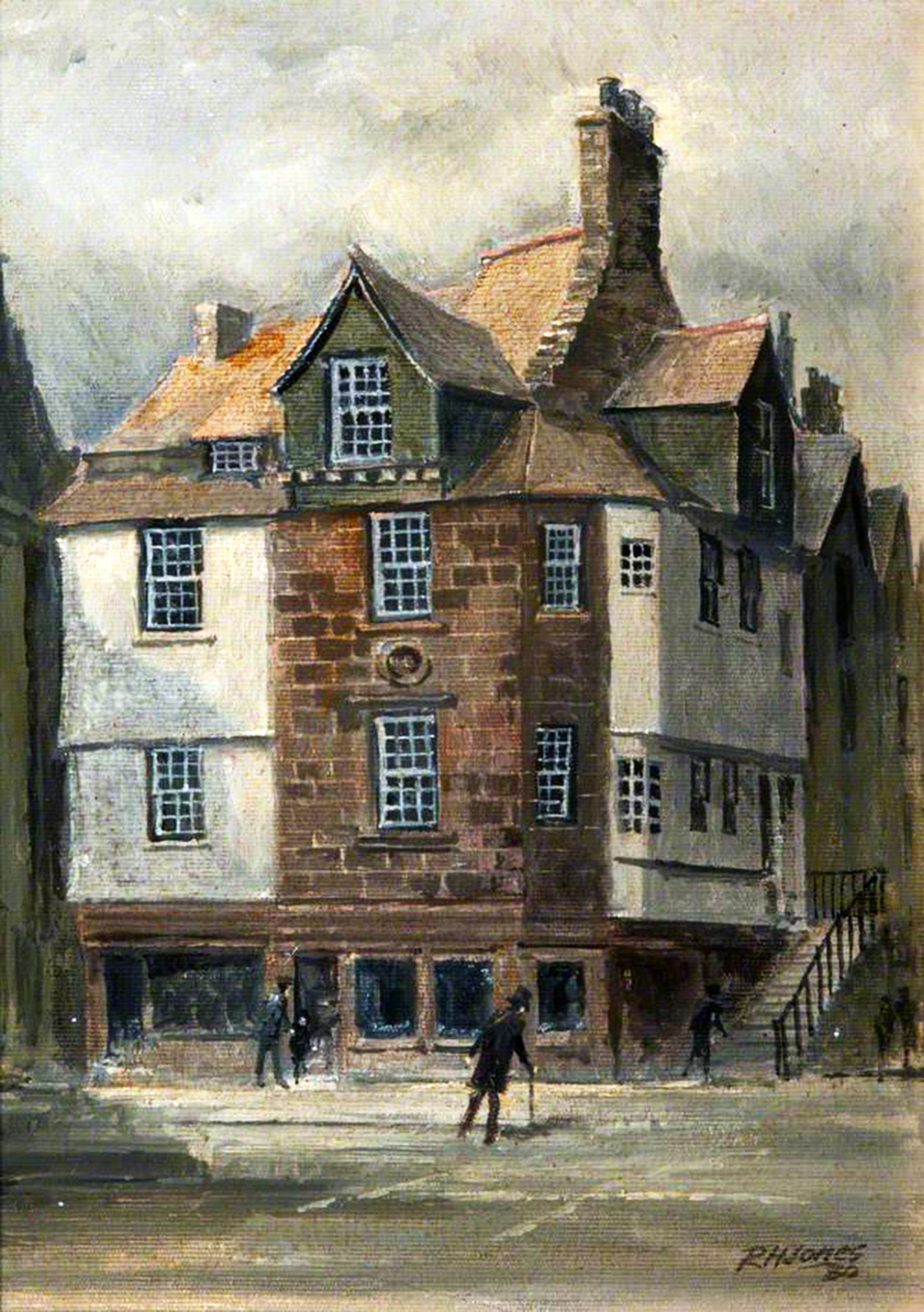
Knox held extremely fond memories of his time in Geneva, describing his learning there as “the most perfect school of Christ”. However, in 1557, the remaining Protestant lords in Scotland signed a covenant pledging themselves to defend Protestant communities and ministers. This signing began the process that would eventually bring Knox back to his native Scotland in 1559.
In response to the signing of the Covenant, the Queen regent in Scotland, Mary of Guise, made military attempts to defend against the spread of Protestantism. Though covenant signatories fought back, even managing to bring Edinburgh under their control by the end of 1559, the Guise’s growing power was an insurmountable obstacle. Knox responded with an unlikely strategy: negotiating with the Queen of England.
Knox’s dialogue with English Queen Elizabeth I is very surprising. After Knox’s publication of his First Blast against women, the newly crowned queen responded by banning Knox from setting foot on English land entirely. Despite this, Knox set their differences aside, negotiating between his strict beliefs on spiritual purity and the political needs of keeping a religious community safe. Knox convinced Elizabeth I to send 10,000 troops to assist Reformists with fighting against the growing influence of the French in Scotland.
English assistance prompted the swift surrender of the Guises in 1560, a win which allowed Protestant Reformers to pass the Scots Confession, a legal document which outlawed papal authority. Scotland was officially taking its first steps as a Protestant nation.
Now back in Edinburgh, Knox and several other Protestant figureheads tackled the complex task of building robust moral foundations for the newborn Church of Scotland (Scots Kirk). Though the period between 1560 and 1572 represented the last 12 years of Knox’s life, this time was as marked by upheaval and conflict for Knox as any other. As the leader of the Scots Kirk, Knox was tasked with advising the Catholic Queen, Mary Queen of Scots, in an attempt to maintain all the political gains the Reformed Church had struggled to secure.
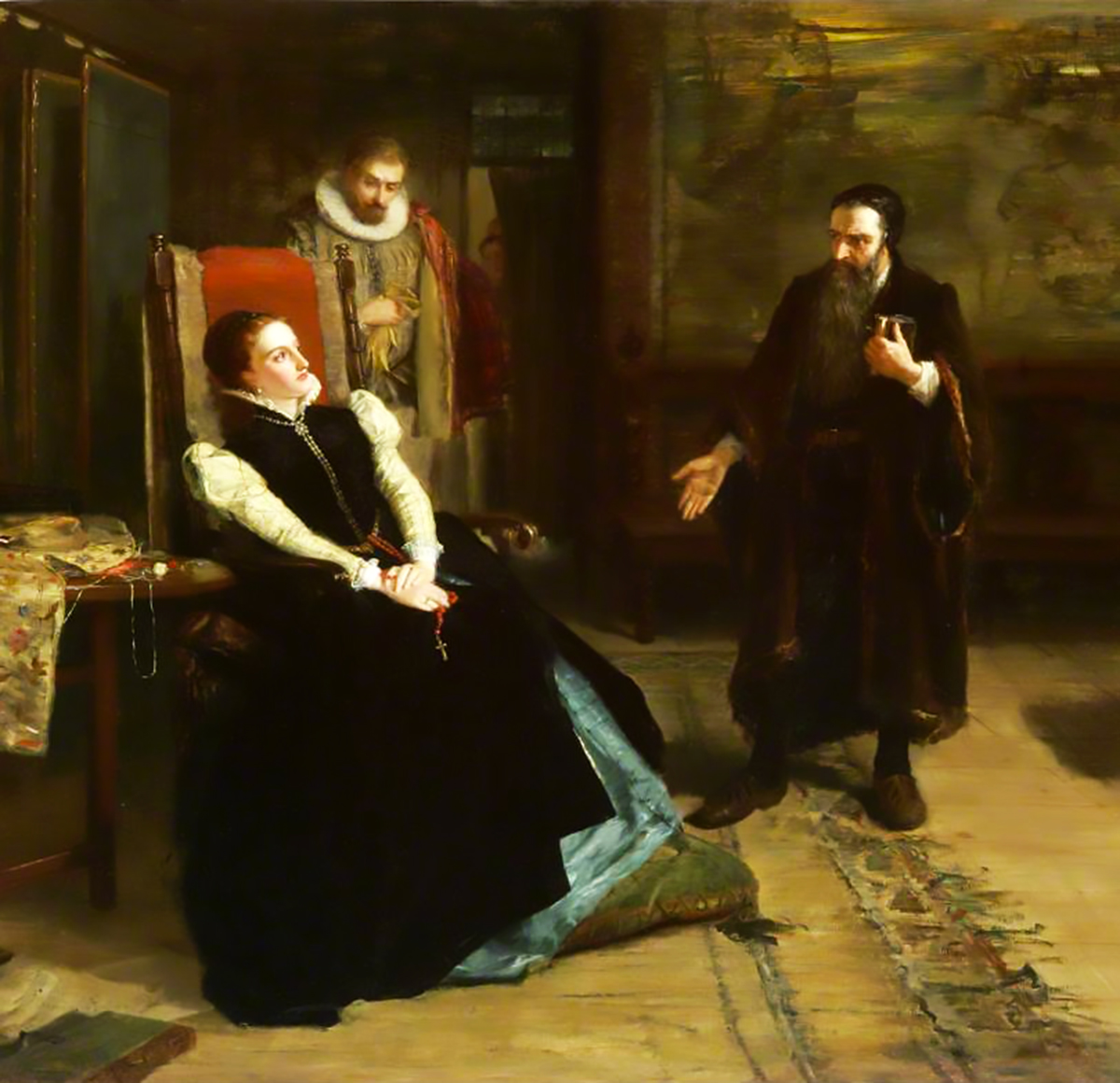
The relationship between Knox and Mary quickly grew bitter and aggressive. It seems as though Mary sought a more compromising approach, while Knox was adamant in his efforts to protect what he believed was the only “true” faith. After a particularly tense exchange, Mary even accused Knox of treason, but he was never convicted. Eventually, Mary abdicated in 1567. Her successor, Protestant James Stewart, was murdered very shortly after taking the crown. The political instability of Scotland at the time descended into yet another vicious battle.
Between 1560 and 1572, Knox also worked on publishing several materials for the running of the Reformed Kirk. With the help of other Protestant leaders, Knox drafted the Book of Common Order, which determined that congregations were to be run in partnership between ministers and democratically elected Elders who were responsible for helping the rest of the congregation maintain their moral code. This system laid the groundwork for Presbyterianism, another offshoot of Protestantism significantly influenced by Knox’s work.
Knox had ambitious plans for the financing of the Scots Kirk. He hoped to use the assets from abandoned Catholic sites of worship to fund the activities of the Reformed Church. In this regard, Knox was frustrated by a complete lack of progress. Roman Catholic clerics were granted the use of all their assets for the remainder of their lives, and Knox never successfully reapproached the topic.
Knox delivered his last sermon in 1572 to an Edinburgh still divided between supporters of Mary Queen of Scots and those of James Stewart. The newly drafted codes of the Scots Kirk were only just finding their footing, and Knox was unsuccessful in steering the Kirk’s source of funding. Here, once again, we see an individual whose life was deeply affected by the political events and considerations he lived within. To his dying day, Knox was embedded in constant struggles between his own strict visions of a perfect Reformed faith and the compromises required to work with others within rapidly changing social contexts.
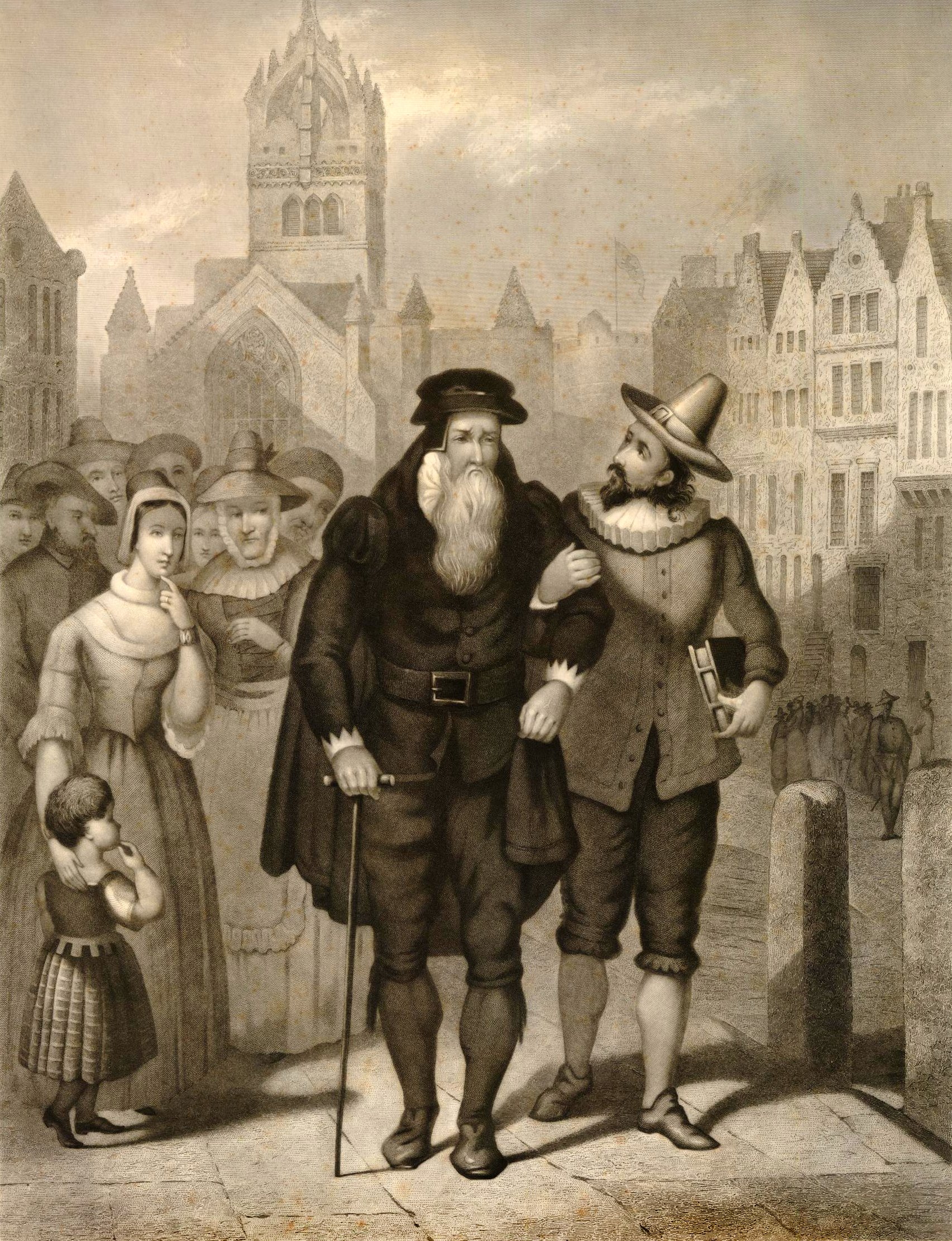
Despite John Knox’s tensions and negotiations, and his kaleidoscopic life which saw aggression and prejudice meld seamlessly with love and devotion, Knox left behind an undeniable legacy that has long survived him.
For good or ill, Knox’s work had political, religious, educational, and social ramifications worldwide. Knox’s successful campaigning for Queen Elizabeth I’s support laid the groundwork for the Act of Union between Scotland and England in 1707, uniting both countries under one crown, an impact which persists in the structure of British governance today.
Knox not only helped build the foundations of the Reformed Churches of both Scotland and England, but his particularly fervent search for religious purity also contributed to a branching process within Protestantism, leading to both Puritan and Presbyterian movements.
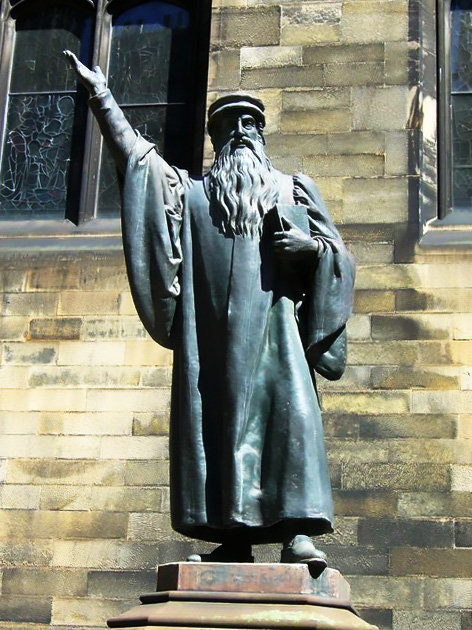
Today, Knox has become a symbol against which marginalized groups can stake claims to freedom. Graduates from both the Universities of Edinburgh and St. Andrews are “capped” and graduated with a light tap on the head with a pillow said to be made of fabric from Knox’s trousers. This is a particularly ironic gesture considering Knox’s limiting stance on women’s access to education. An urban legend from Edinburgh tells that on the evening of their graduations, all the women who have successfully completed Theology degrees take turns spitting at the feet of a statue of John Knox as a final rebellion against a man who, in the name of religious reform, sought to limit women’s access to knowledge of the divine.
From John Knox’s life, then, we learn that the multifarious perspectives we may hold on him and other important historical figures also echo the constant processes of tension between self and the outside world, right and wrong, living in community, and the pursuit of social change.
